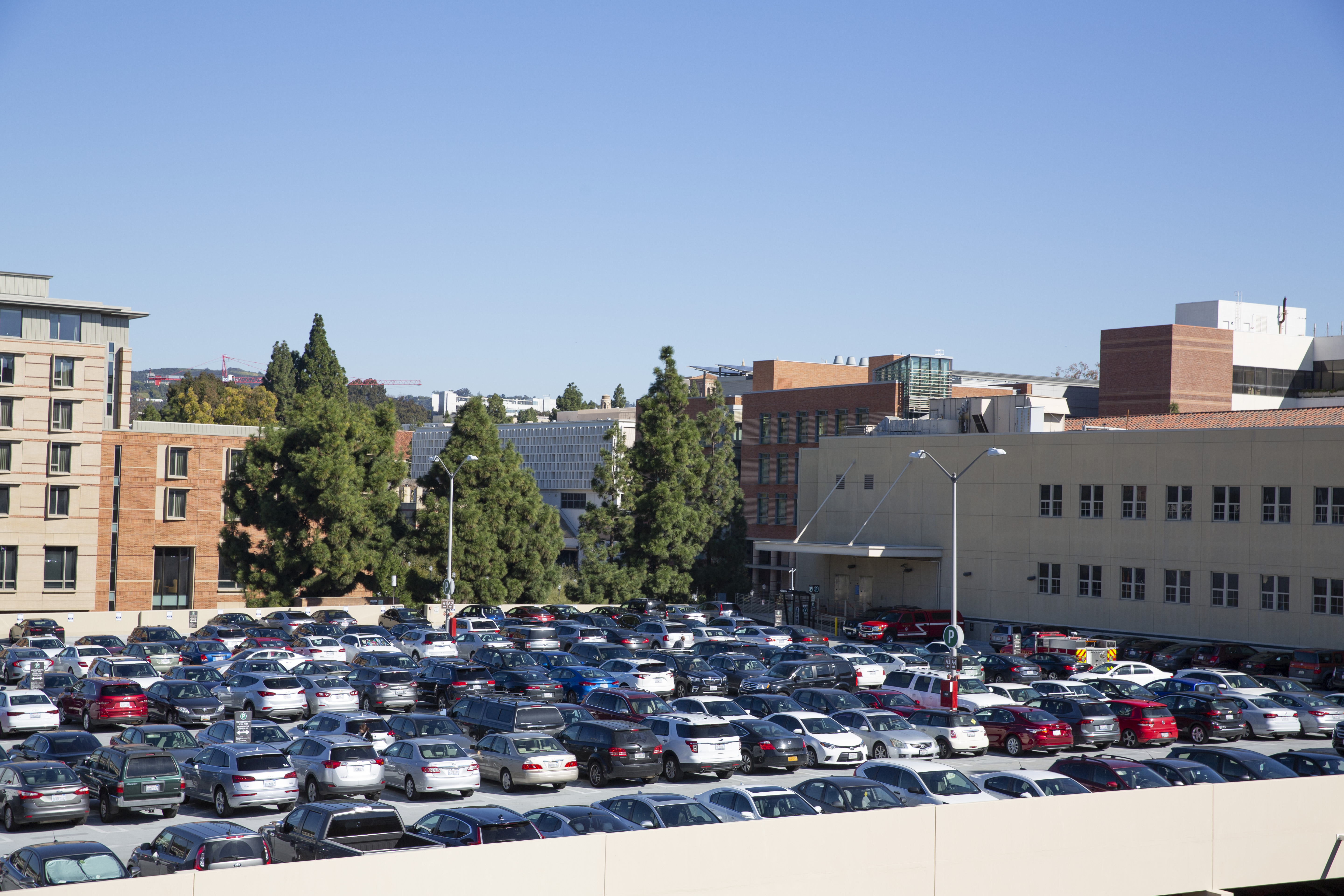Marking the one-year milestone of the pandemic and ready to turn the corner on a tough 2020 that closed the campus, UCLA Transportation looked at how well telecommuting worked when nearly 80% of campus employees (excluding medical center staff) were sent home to work remotely. The
resulting analysis reveals a win-win scenario for the University and its workforce — as well as a big step forward in sustainability.
Thousands of employees began working from home in spring 2020, when Los Angeles issued a Safer at Home order. Only those engaged in essential campus operations were permitted to stay. With L.A.’s notorious traffic congestion, eliminating a commute was advantageous, but not simply in reclaimed time.
Telecommuting can improve health, particularly for those with long commutes. UCLA research shows those with longer commutes are at risk for having higher blood pressure and cortisol levels.
Beyond physical health impacts, telecommuting can also help reduce the risk of mental health issues. Research notes that people with commutes of at least 10 miles each way have a higher tendency toward depression and anxiety. Collectively, UCLA employees saved roughly 4,000 hours of commute time each weekday morning alone. Less time spent on freeways means less exposure to harmful air pollutants too.
Shrink the number of people coming to campus, and you shrink the campus carbon footprint. By lowering the fuel consumption necessary for travel, emissions measurably go down. For each telecommuting employee at UCLA, 1.73 metric tons of greenhouse gas emissions could be reduced every year.
Indications suggest management also responded positively to work from home arrangements. In a survey, more than 90% of supervisors who manage telecommuting employees said staff have been as productive or more productive than expected. More than 80% of supervisors felt their units would maintain quality of work at the same level or higher as when employees worked mainly in the office.
Studies show a correlation between commute distance and absenteeism, so with no stressful trip ahead of them, telecommuters are less likely to be out on any given day. Projections calculate employee turnover would decrease by 8% and absenteeism reduced by at least 10% with a telecommuting program.

Another benefit to the University with telecommuting is reduced office and parking space requirements. Space needs and real estate costs can be lowered by instituting a widespread telecommuting program. As the campus reopens, parking demand is expected to surge and sustainable transportation options like telecommuting will be necessary to offset the demand.
The report also includes 4 recommended actions UCLA should take to further support effective campus-wide teleworking in the future:
-
Implement a broad effort to encourage telecommuting across the UCLA employment base, with overt and public support by campus executives
-
Select suitable departments or units within departments whose work is tuned towards back office operations to use as pilots for a 100% telecommuting program
-
Set up high-quality training to aid management’s learning of how to manage remotely; telecommuting-oriented workplaces require performance-based management. Managing to outcomes is sometimes new to managers and changes communication needs and requires a drive for clarity in assignments, due dates, and deliverables
-
Reorient future hiring decisions with a more holistic perspective on work location, working style, and how often employees work on campus; this has particular benefits related to equity, diversity, and inclusion
Even as the pandemic fades, UCLA will continue to support telework as a sustainable transportation program as its benefits address anticipated greater parking demand, reduce the need for additional office space, and help the University meet sustainability goals all while providing greater flexibility for employees. For more information on telecommuting at UCLA,
click here for the university’s guide and resources for employees.
 By Karen Hallisey, UCLA Events & Transportation
By Karen Hallisey, UCLA Events & Transportation Another benefit to the University with telecommuting is reduced office and parking space requirements. Space needs and real estate costs can be lowered by instituting a widespread telecommuting program. As the campus reopens, parking demand is expected to surge and sustainable transportation options like telecommuting will be necessary to offset the demand.
Another benefit to the University with telecommuting is reduced office and parking space requirements. Space needs and real estate costs can be lowered by instituting a widespread telecommuting program. As the campus reopens, parking demand is expected to surge and sustainable transportation options like telecommuting will be necessary to offset the demand.
